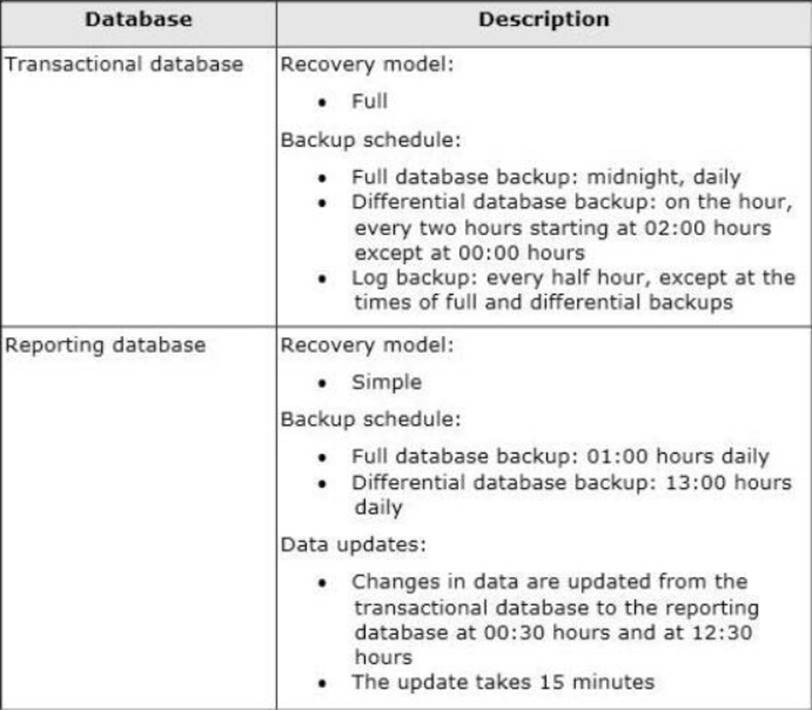- All Exams Instant Download
What should you do?
You administer a Microsoft SQL Server 2016 server that hosts a transactional database and a reporting database. The transactional database is updated through a web application and is operational throughout the day.
The reporting database is only updated from the transactional database.
The recovery model and backup schedule are configured as shown in the following table:

At 14:00 hours, you discover that pages 71, 520, and 713 on one of the database files are corrupted on the reporting database.
You need to ensure that the databases are restored.
You also need to ensure that data loss is minimal.
What should you do?
A . Perform a partial restore.
B . Restore the latest full backup, and restore the latest differential backup. Then, restore each log backup taken before the time of failure from the most recent differential backup.
C . Restore the latest full backup.
D . Restore the latest full backup, and restore the latest differential backup. Then, restore the latest log backup.
E . Perform a page restore.
F . Restore the latest full backup. Then, restore each differential backup taken before the time of failure from the most recent full backup.
G . Perform a point-in-time restore.
H . Restore the latest full backup. Then, restore the latest differential backup.
Answer: H
Explanation:
At restore time, before you restore a differential backup, you must restore its base. Then, restore only the most recent differential backup to bring the database forward to the time when that differential backup was created.
Typically, you would restore the most recent full backup followed by the most recent differential backup that is based on that full backup.
References: https://technet.microsoft.com/en-us/library/ms345448(v=sql.105).aspx
Latest 70-764 Dumps Valid Version with 451 Q&As
Latest And Valid Q&A | Instant Download | Once Fail, Full Refund
Subscribe
Login
0 Comments
Inline Feedbacks
View all comments

